Tim Stahl
TUM Autonomous Motorsport: An Autonomous Racing Software for the Indy Autonomous Challenge
May 31, 2022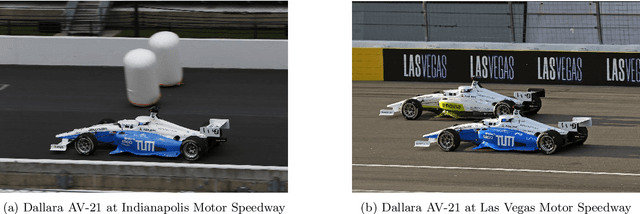
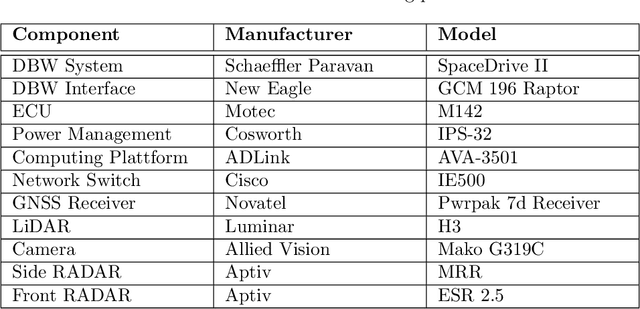
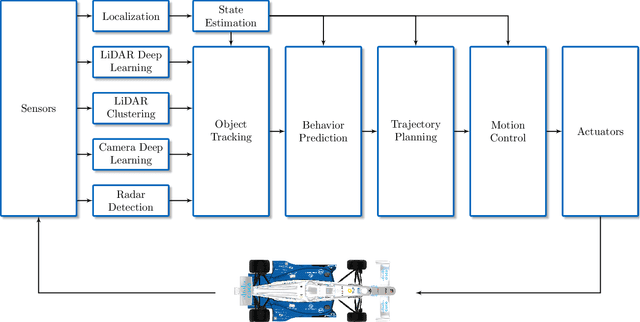

Abstract:For decades, motorsport has been an incubator for innovations in the automotive sector and brought forth systems like disk brakes or rearview mirrors. Autonomous racing series such as Roborace, F1Tenth, or the Indy Autonomous Challenge (IAC) are envisioned as playing a similar role within the autonomous vehicle sector, serving as a proving ground for new technology at the limits of the autonomous systems capabilities. This paper outlines the software stack and approach of the TUM Autonomous Motorsport team for their participation in the Indy Autonomous Challenge, which holds two competitions: A single-vehicle competition on the Indianapolis Motor Speedway and a passing competition at the Las Vegas Motor Speedway. Nine university teams used an identical vehicle platform: A modified Indy Lights chassis equipped with sensors, a computing platform, and actuators. All the teams developed different algorithms for object detection, localization, planning, prediction, and control of the race cars. The team from TUM placed first in Indianapolis and secured second place in Las Vegas. During the final of the passing competition, the TUM team reached speeds and accelerations close to the limit of the vehicle, peaking at around 270 km/h and 28 ms2. This paper will present details of the vehicle hardware platform, the developed algorithms, and the workflow to test and enhance the software applied during the two-year project. We derive deep insights into the autonomous vehicle's behavior at high speed and high acceleration by providing a detailed competition analysis. Based on this, we deduce a list of lessons learned and provide insights on promising areas of future work based on the real-world evaluation of the displayed concepts.
Indy Autonomous Challenge -- Autonomous Race Cars at the Handling Limits
Feb 08, 2022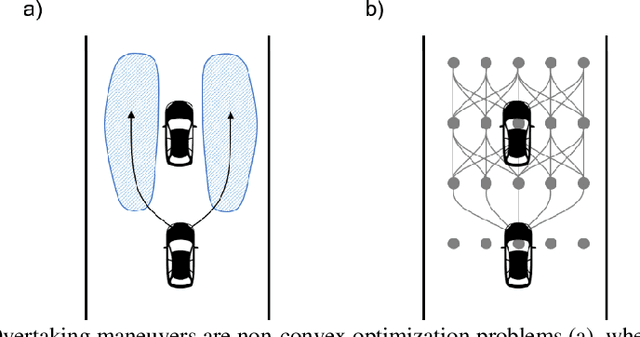
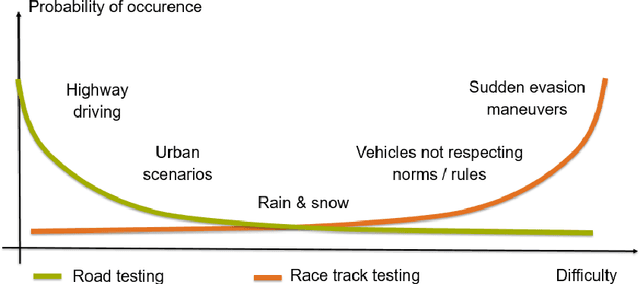
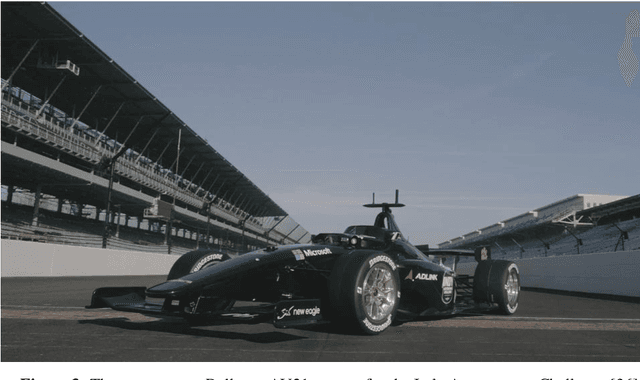
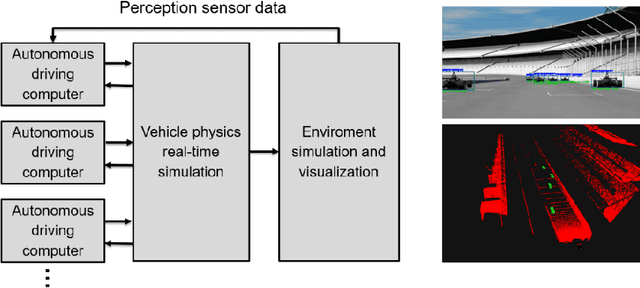
Abstract:Motorsport has always been an enabler for technological advancement, and the same applies to the autonomous driving industry. The team TUM Auton-omous Motorsports will participate in the Indy Autonomous Challenge in Octo-ber 2021 to benchmark its self-driving software-stack by racing one out of ten autonomous Dallara AV-21 racecars at the Indianapolis Motor Speedway. The first part of this paper explains the reasons for entering an autonomous vehicle race from an academic perspective: It allows focusing on several edge cases en-countered by autonomous vehicles, such as challenging evasion maneuvers and unstructured scenarios. At the same time, it is inherently safe due to the motor-sport related track safety precautions. It is therefore an ideal testing ground for the development of autonomous driving algorithms capable of mastering the most challenging and rare situations. In addition, we provide insight into our soft-ware development workflow and present our Hardware-in-the-Loop simulation setup. It is capable of running simulations of up to eight autonomous vehicles in real time. The second part of the paper gives a high-level overview of the soft-ware architecture and covers our development priorities in building a high-per-formance autonomous racing software: maximum sensor detection range, relia-ble handling of multi-vehicle situations, as well as reliable motion control under uncertainty.
An Open-Source Scenario Architect for Autonomous Vehicles
Jun 17, 2020



Abstract:The development of software components for autonomous driving functions should always include an extensive and rigorous evaluation. Since real-world testing is expensive and safety-critical -- especially when facing dynamic racing scenarios at the limit of handling -- a favored approach is simulation-based testing. In this work, we propose an open-source graphical user interface, which allows the generation of a multi-vehicle scenario in a regular or even a race environment. The underlying method and implementation is elaborated in detail. Furthermore, we showcase the potential use-cases for the scenario-based validation of a safety assessment module, integrated into an autonomous driving software stack. Within this scope, we introduce three illustrative scenarios, each focusing on a different safety-critical aspect.
Multilayer Graph-Based Trajectory Planning for Race Vehicles in Dynamic Scenarios
May 18, 2020



Abstract:Trajectory planning at high velocities and at the handling limits is a challenging task. In order to cope with the requirements of a race scenario, we propose a far-sighted two step, multi-layered graph-based trajectory planner, capable to run with speeds up to 212~km/h. The planner is designed to generate an action set of multiple drivable trajectories, allowing an adjacent behavior planner to pick the most appropriate action for the global state in the scene. This method serves objectives such as race line tracking, following, stopping, overtaking and a velocity profile which enables a handling of the vehicle at the limit of friction. Thereby, it provides a high update rate, a far planning horizon and solutions to non-convex scenarios. The capabilities of the proposed method are demonstrated in simulation and on a real race vehicle.
* Accepted at The 22nd IEEE International Conference on Intelligent Transportation Systems, October 27 - 30, 2019
 Add to Chrome
Add to Chrome Add to Firefox
Add to Firefox Add to Edge
Add to Edge